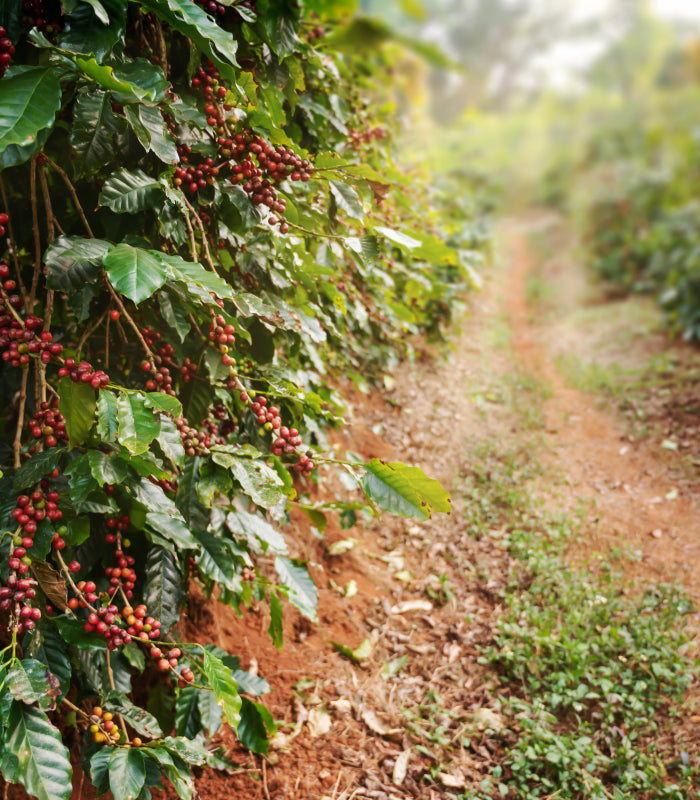Description
Description
Origin
Origin
Brew Advice
Brew Advice

easy care
Stands up to play time, craft
hour, and "Mom, I want to help."

4 way stretch
Send them to recess
without worry.

FAST DELIVERY
Trusted by parents all
over the country.
roasting
Espresso Roasting
Our espresso roasts are usually roasted darker and slower than our filter or omni roasts. However, this does not always apply to lighter variants, which tend to be roasted more slowly but not necessarily darker. This method breaks down more acids and gives the coffee a fuller body . Although the crema is not a direct quality indicator, lighter roasts are characterized by a lighter and thinner crema that contains natural bitter substances. Ideal for portafilters, stovetop coffee pots and sometimes also for fully automatic machines .
Light roast
The light roast, with a roasting time of 7 to 10 minutes, emphasizes mainly fruity aromas, without dominant roasted aromas . The body can vary from light to medium, with increased acidity often noticeable. This roast is ideal for lovers of fruity and floral coffees .

processing
Natural Process
In the natural process (also called dry processing), the coffee cherries are washed after harvesting and sorted by size . The cherries, still with the pulp, are laid out to dry on drying beds or large tarpaulins directly on the ground . Regular turning is necessary to prevent them from "rotting". When it rains and sometimes at night, the cherries must be covered to protect them from moisture. Some farms also use greenhouses here. After drying , further processing takes place in the dry mill, where grading also takes place .
Anaerobic treatment
In anaerobic processing, the coffee cherries are fermented anaerobically before the actual processing begins by storing them in tanks or plastic bags without oxygen . This can last for several hours to weeks . Sometimes yeast is added (yeast fermented), which further increases the variety of flavors. Coffees from anaerobic processing often have very intense, sometimes sour or alcoholic flavors (rum, whiskey...) or even unnatural flavors (gummy bears, etc.). Sometimes, however, super clean and delicate flavors also emerge. This method requires a lot of sensitivity from the coffee farmer in order to achieve the perfect balance and purity of flavor. Sometimes a combination of fermentation and drying is chosen , as in double fermentation.

Cultivation land
Coffee cultivation Colombia
Colombia, a country with ideal climate conditions for growing coffee , produces coffees that can cover almost every taste preference. From sweet and mild to rich and acidic profiles , Colombia offers an impressive variety of varieties and processing methods. This makes the country one of the most exciting and diverse coffee producers in the world and therefore one of our absolute favorite coffee countries.

Coffee specialties
Microlot: Exclusive small batches
A microlot represents a high-quality, small batch of coffee that is selected for special characteristics such as a special variety, exceptional growing conditions or an innovative processing method such as anaerobic fermentation . These coffees often come from a specific part of a farm where the soil, microclimate and sunlight provide optimal conditions for growing. Microlots are known for their high quality and limited availability and often offer unique flavor profiles that set them apart from standard coffees.

Types of coffee
Arabica
Arabica is the most widely consumed type of coffee in the world and is generally considered to be of higher quality compared to Robusta. Arabica coffee is characterized by a delicate flavor profile that can range from fruity to chocolatey-nutty flavors . This diversity is partly due to the variety, the country where it is grown, the soil, and especially the altitude. Arabica is grown at higher altitudes, typically above 1000 meters , where the slower growing conditions encourage the development of richer and more complex flavors. However, Arabica is also more susceptible to pests and fungal diseases such as coffee rust . More recently, Arabica-Robusta hybrids have also been developed to combine the robustness of Robusta with the delicate flavor characteristics of Arabica.







